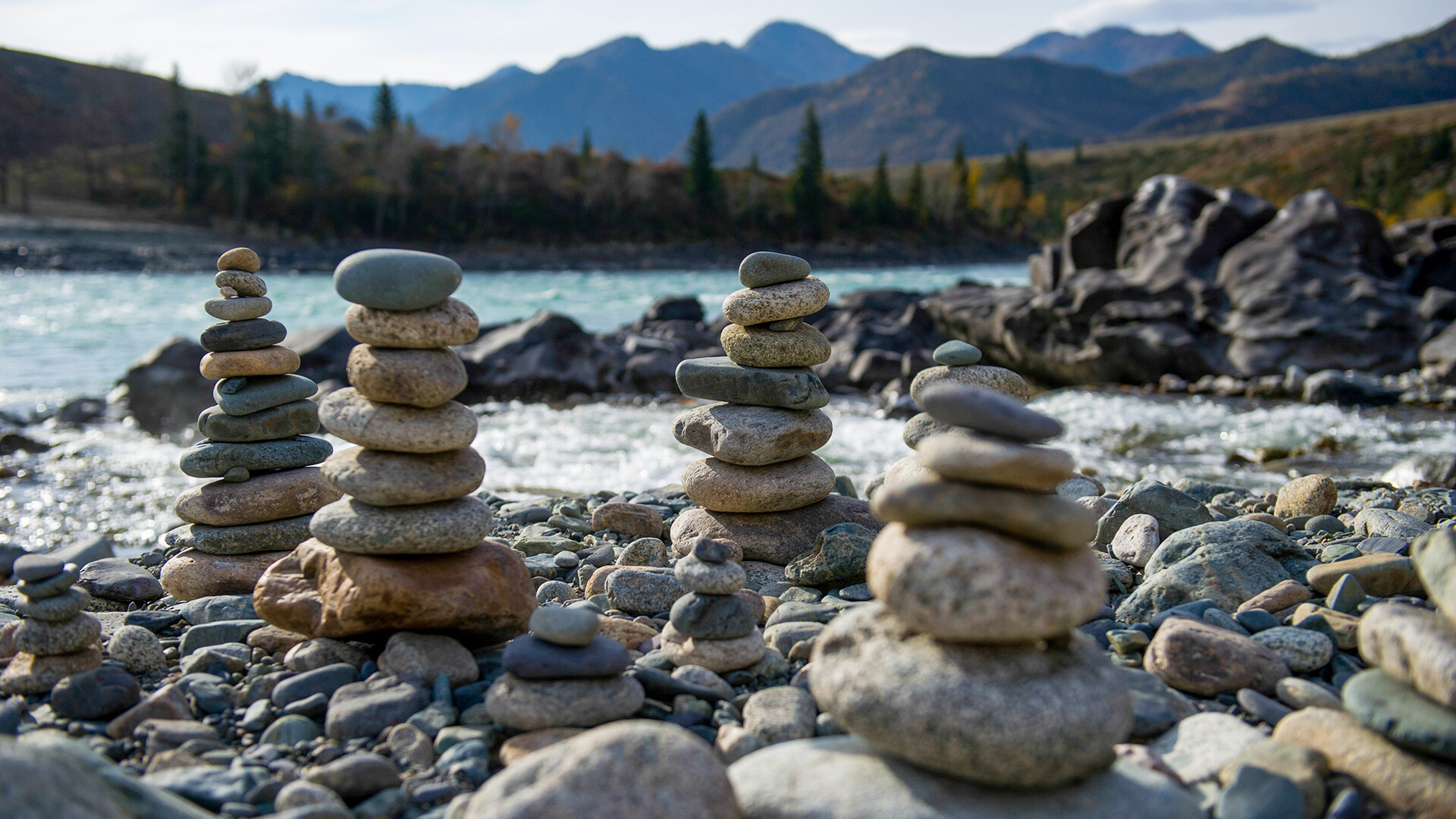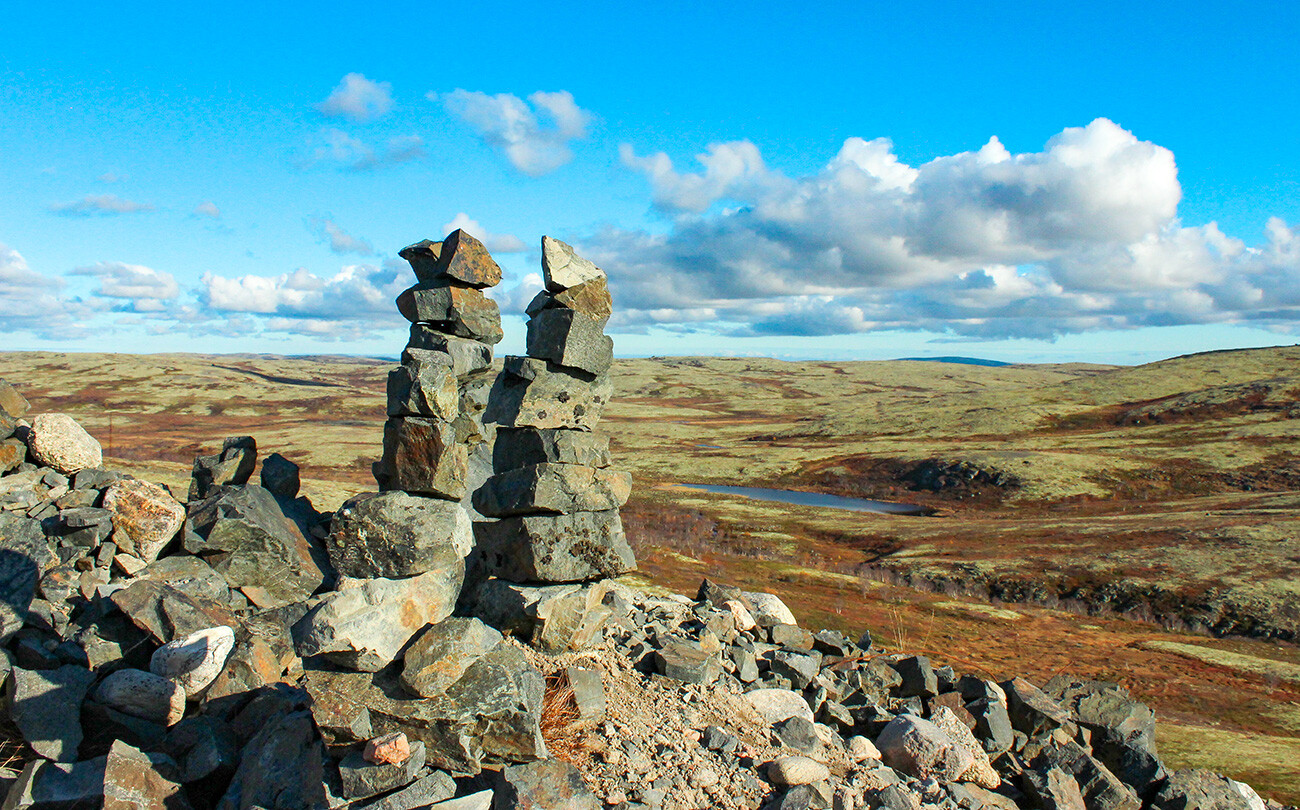
On the bank of the Katun River in the Ongudai district.
Kirill Kukhmar/TASS
In ancient times, people around the world would build such pyramids as landmarks. For example, large pyramids pointed to burial mounds or dolmens. ‘Gurias’ placed at regular intervals could indicate a direction of movement. ‘Gurias’ on the top of a mountain, meanwhile, marked the highest point.

Buryats and Tuvinians have similar structures called ‘obo’, which are also found near roads and mountain trails. You can also see ribbons on them. ‘Obos’ are placed as a sign of respect to local spirits.
Modern hikers who like to explore the mountains also construct them to mark their route, not to get lost and to leave a mark of themselves to future hikers.

However, there are also such tourists who make pyramids just out of inertia. It’s something akin to the inscription: “Ivan was here”, but made of stone.

On the road to Teriberka.
Pavel KuzmichevDear readers,
Our website and social media accounts are under threat of being restricted or banned, due to the current circumstances. So, to keep up with our latest content, simply do the following:
If using any of Russia Beyond's content, partly or in full, always provide an active hyperlink to the original material.
Subscribe
to our newsletter!
Get the week's best stories straight to your inbox